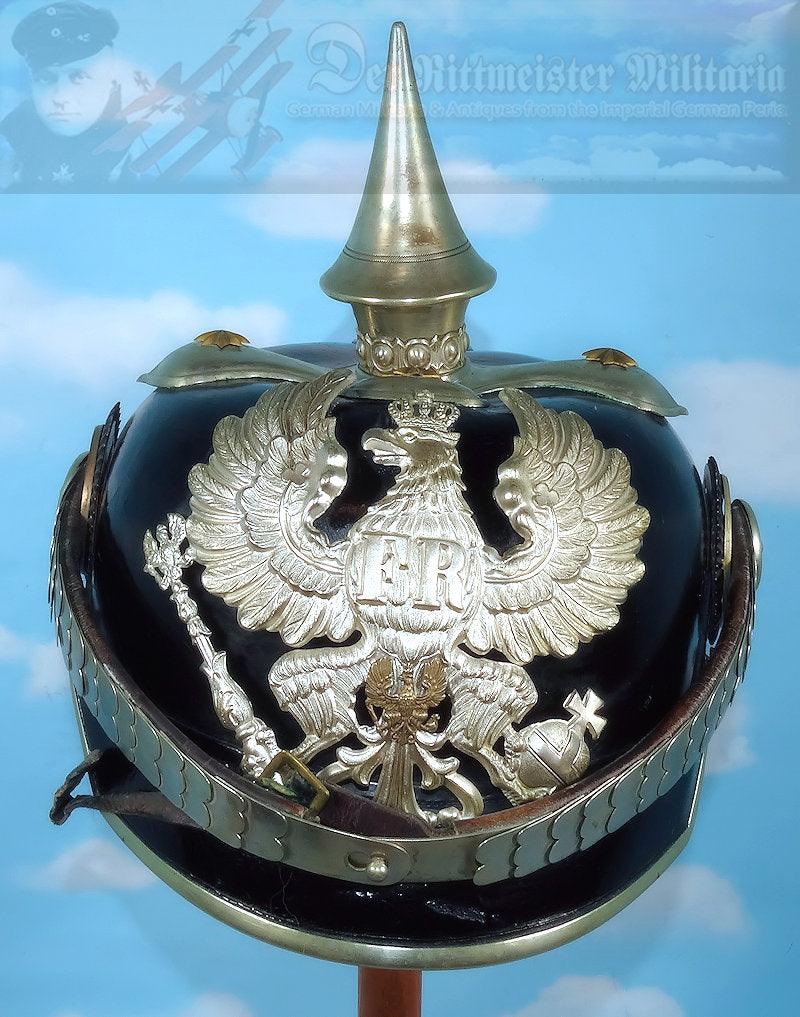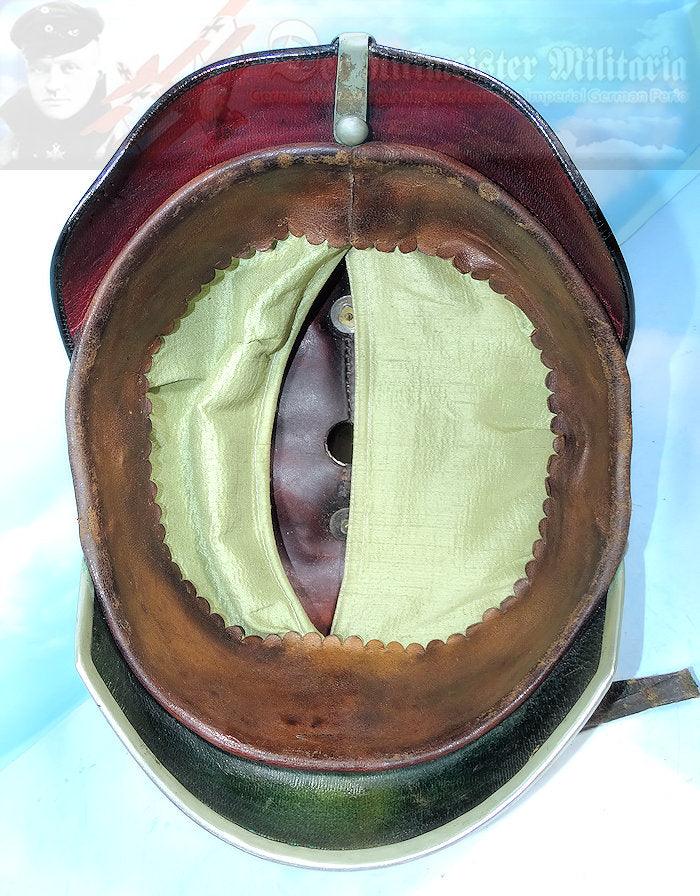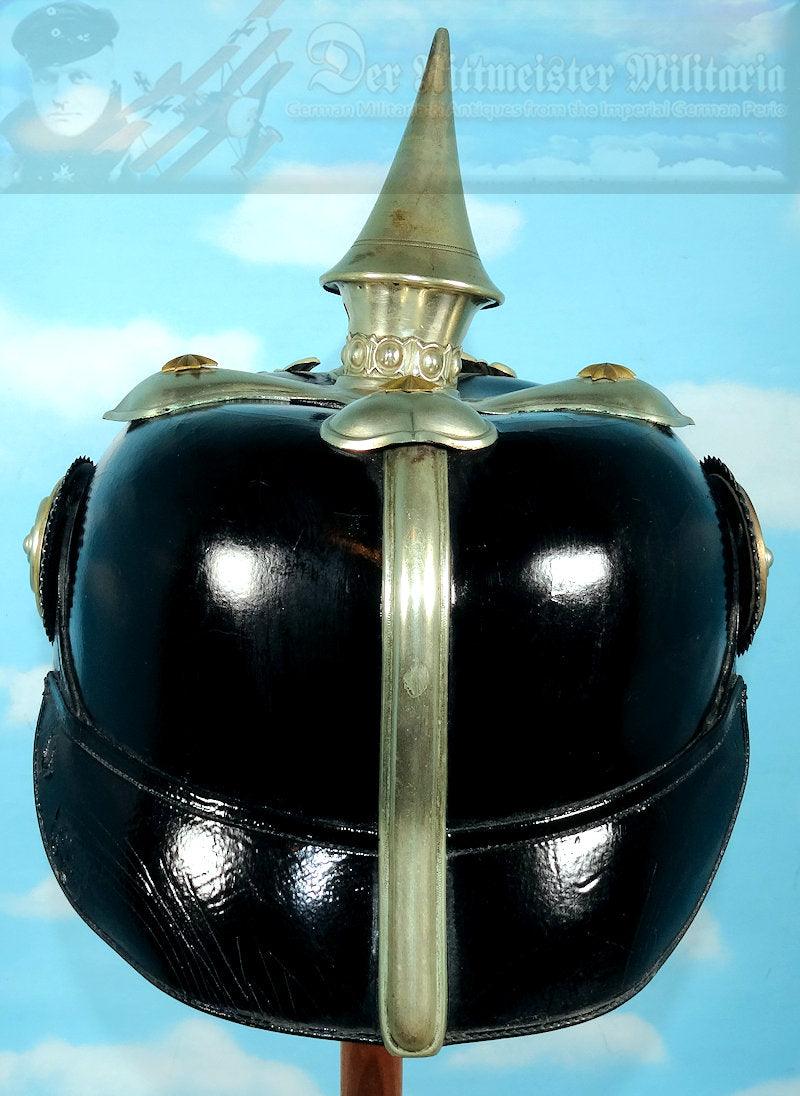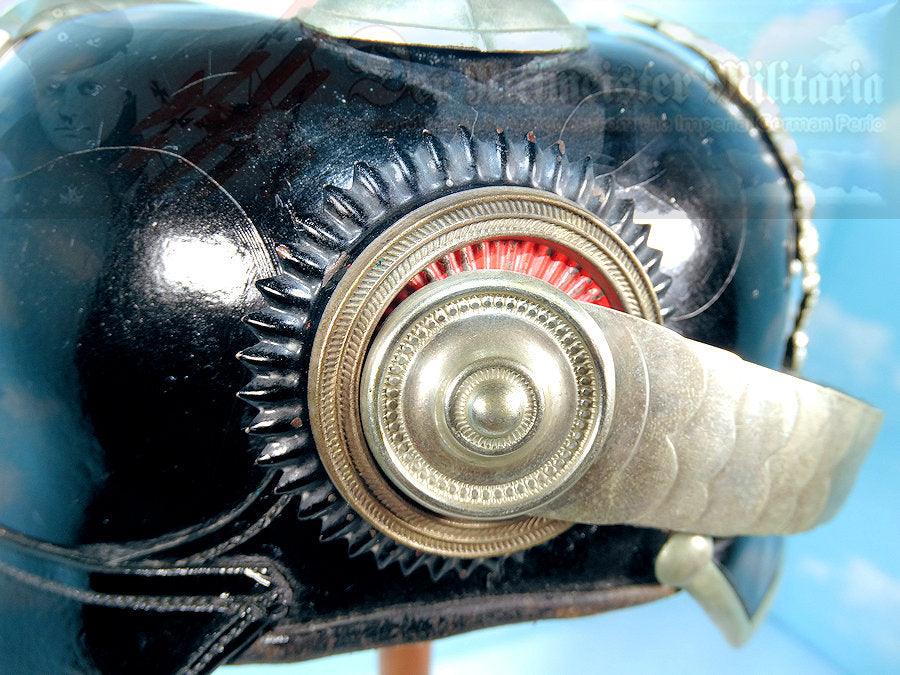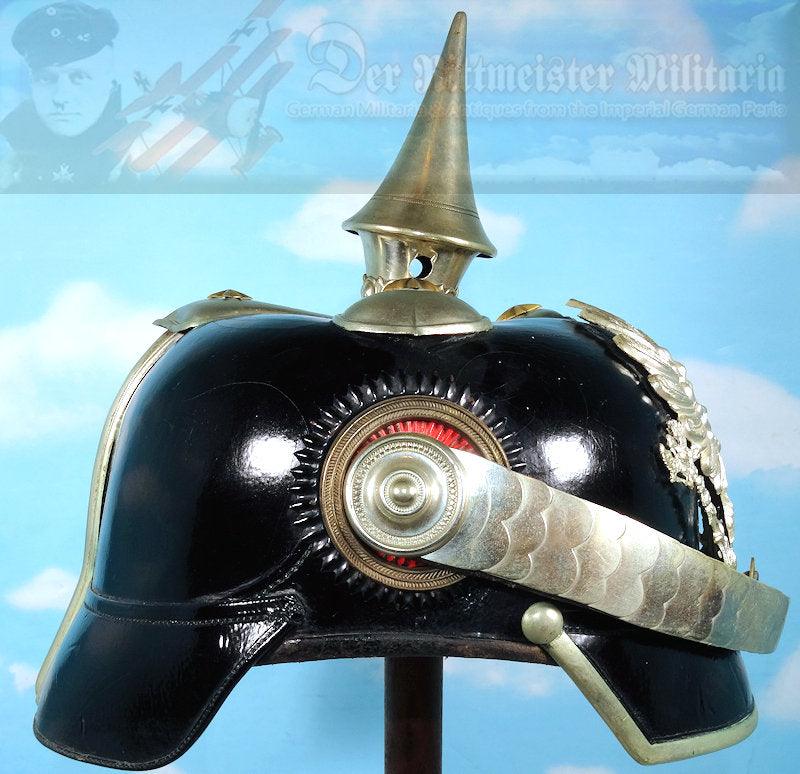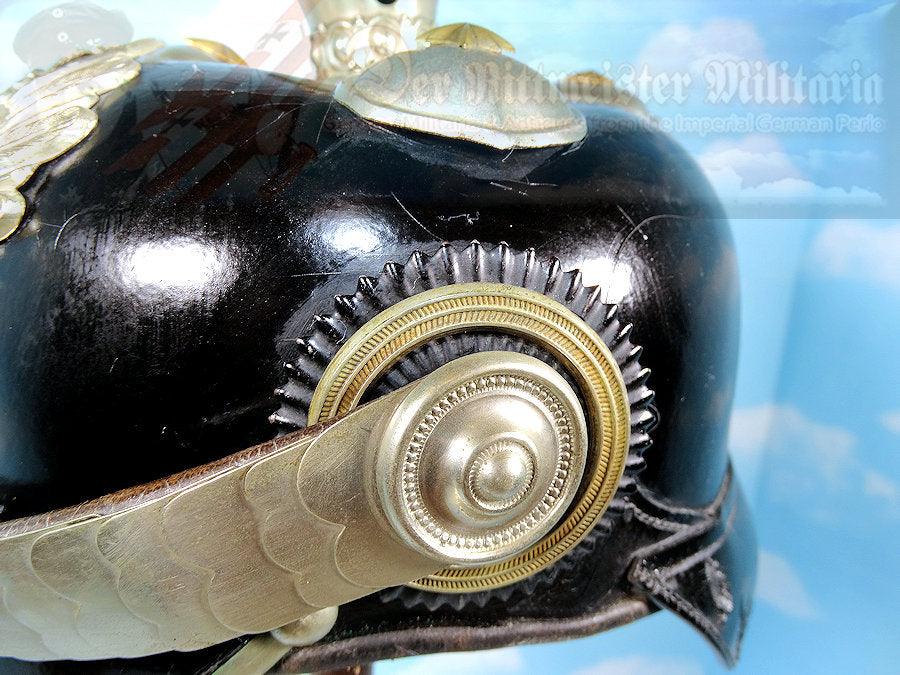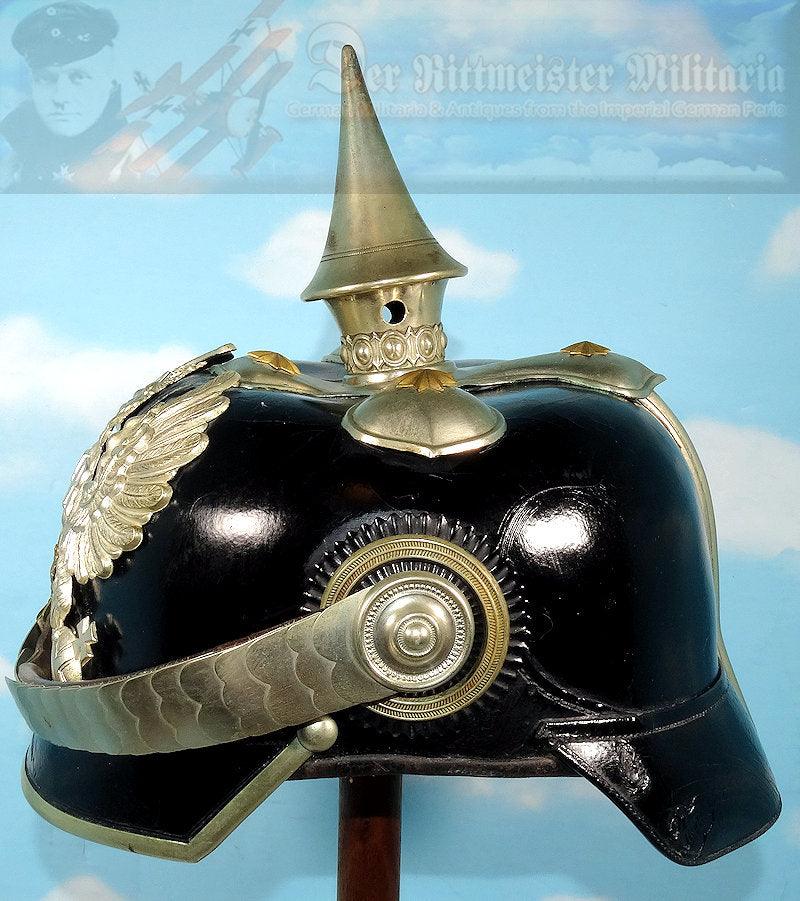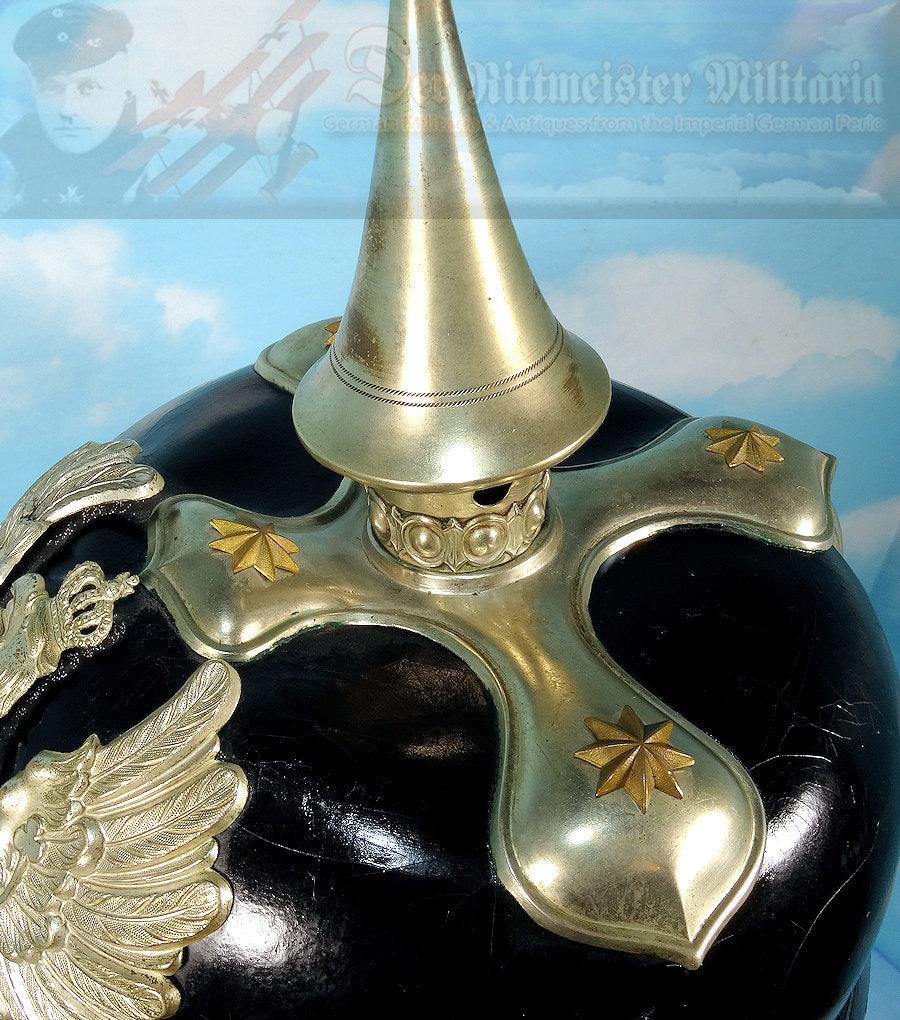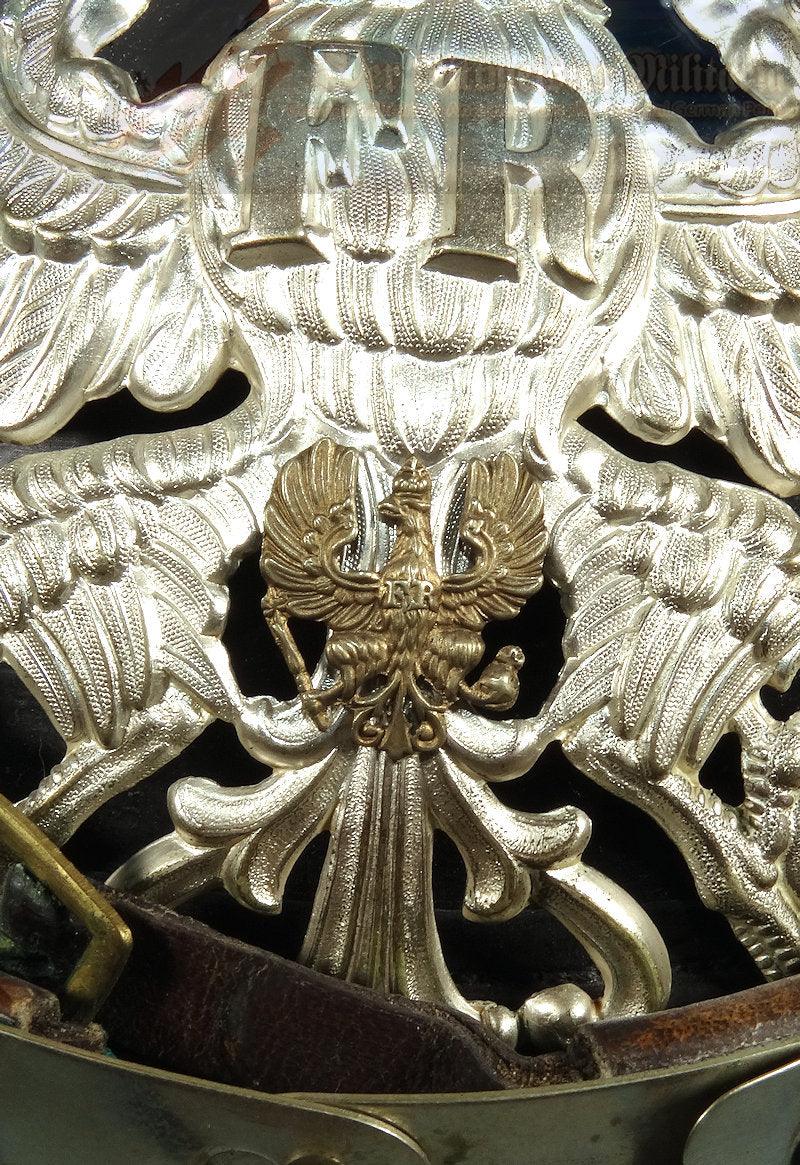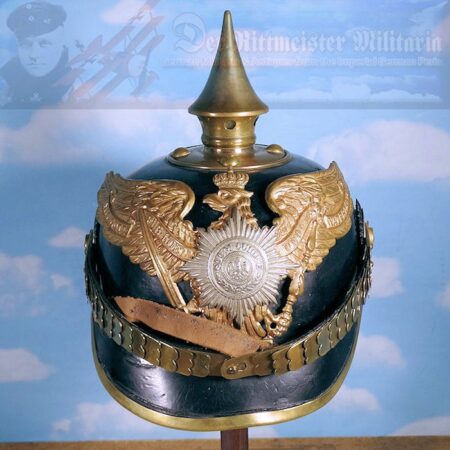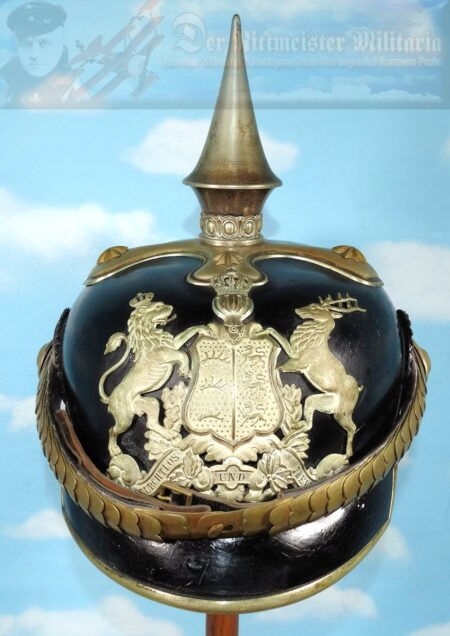Description
This officer’s pickelhaube is a fine example of a Prussian Army Military Administration member’s headgear, with a handsome leather body finish and silver furniture. The squared visor may initially appear to come from a Dragoner-Regiment, but it is actually more desirable to collectors due to its association with the broader category of Military Administration. Our expert identified several possible positions, including Technical Official from the War Ministry, Military Intendance Official, and more.
All the original hardware is present under the light-green silk liner, with NO double holes where the wappen is attached. The helmet’s condition is well above average, if not excellent, meeting Der Rittmeister Militaria’s Four Critical Criteria for collecting pickelhauben: ORIGINALITY, AUTHENTICITY, CONDITION, and QUALITY.
The pickelhaube was designed in 1842 by Prussia’s König Frederick William IV for use in the Prussian Infanterie and was soon adopted by Germany’s other states and kingdoms during the mid-19th Century. Spiked helmets were also adopted by many Latin American countries and even worn by the USA’s armed forces from the 1880s until around 1910.
If you’re interested in learning more about pickelhauben, check out Jim Turinetti’s excellent reference books on the subject. We also offer other spiked helmets, including examples from the Kaiserliche Marine and the Infantry, on our website.
The Prussian Army’s Military Administration was responsible for various logistical and administrative tasks related to the military. Members of this organization held various positions that required technical and specialized knowledge, such as Technical Officials from the War Ministry, Military Intendance Officials, Military Justice Officials, Officials of the General Staff, Military Construction Officials, Senior Technical Officials of the Military Institute, and Apothecary Officials.
One example of a Military Administration member is an officer who would have worn a pickelhaube, or spiked helmet, with a squared visor. The officer’s pickelhaube would have been adorned with silver furniture, including four gilt officers’ stars, a high-caliber wappen with a luscious, frosted finish, and an official’s small, gilt eagle attached to the wappen. The other silvered furniture would have included superb chin scales, a cruciform, pearl ring, and a sharp-looking spike. The officer’s state and Reich’s kokarden would have also been present.
Typically, these positions were not at the Regimental level, and if they were for the General Staff, these officials were assigned to duties in Berlin. The other functions might also have been in Berlin, although some might have been employed at the Armeekorps level prior to the beginning of WWI (when the latter was the highest military formation within the Imperial German Army).
For those interested in learning more about Imperial German militaria, particularly spiked helmets or pickelhauben, there are resources available online, such as Der Rittmeister Militaria’s website, which offers a wide selection of items and information on collecting pickelhauben. Additionally, Jim Turinetti’s excellent reference books on the subject are also available for purchase. He is widely considered to be the foremost authority on pickelhauben in the United States.
